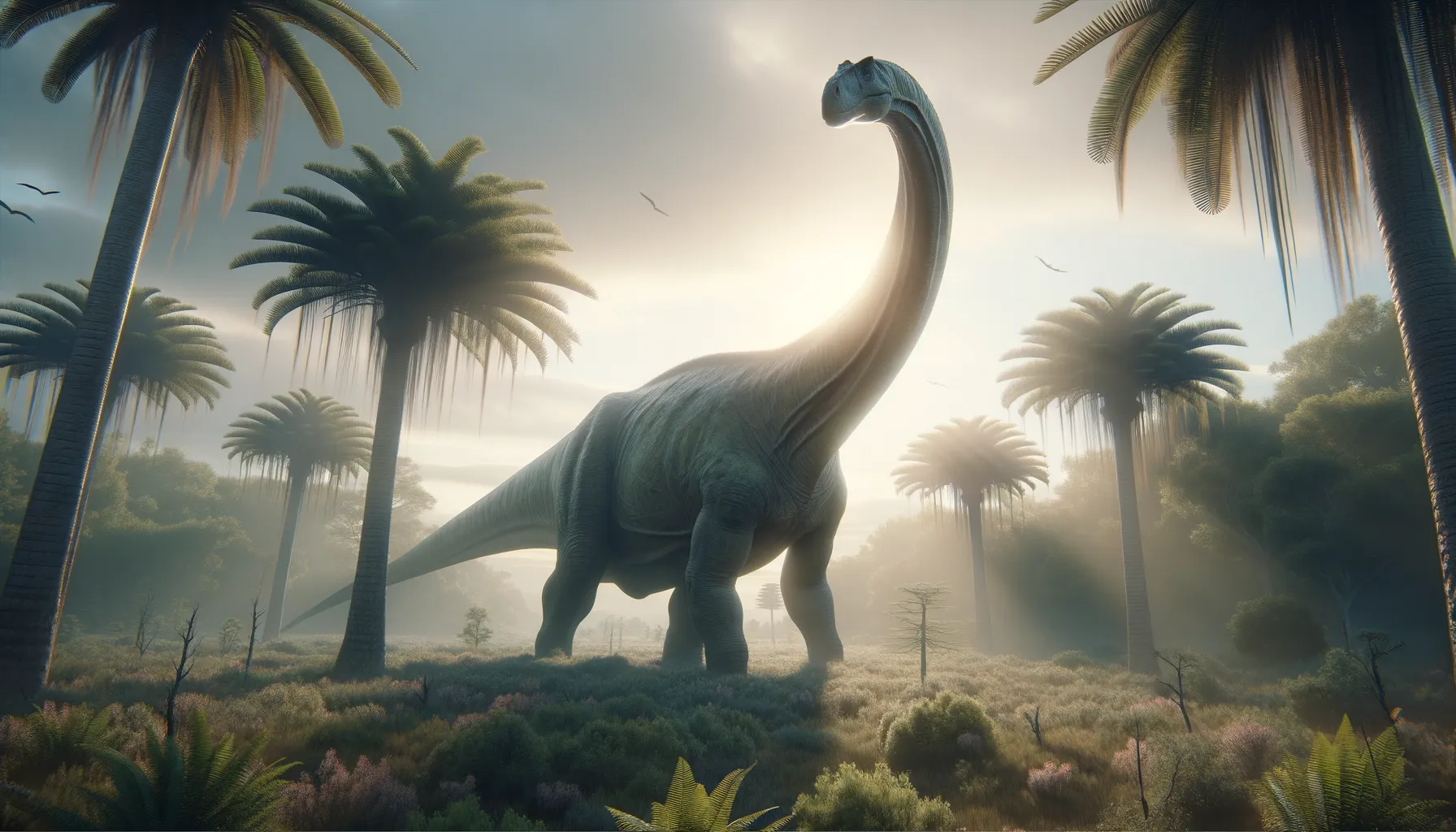
Amphicoelias
The colossal giant of the Jurassic age!
Period
Jurassic
Length
Estimated length of over 30 meters.
Height
Could reach heights of over 18 meters.
Weight
Weighed up to 135 metric tons.
Amphicoelias was one of the largest dinosaurs to ever roam the Earth, belonging to the sauropod family. Known for its incredible size and long neck, it lived during the Late Jurassic period. This herbivorous dinosaur mainly fed on tall vegetation, using its massive body to browse the tops of trees. Its enormity provided natural protection against most predators, making it a relatively peaceful giant of its time.
Diet
Amphicoelias primarily fed on plant material, particularly foliage from tall trees. Its long neck allowed it to reach high vegetation that other herbivores could not, providing it with a significant dietary advantage.
Hunting
As a herbivore, Amphicoelias did not hunt. Instead, it relied on its size for protection and maintained access to ample food by moving through forested areas in search of high-growing plants.
Environmental challenges
Amphicoelias faced challenges such as finding enough food to sustain its massive size, especially during periods of drought. Its environment was occasionally disrupted by volcanic activity, affecting the flora it depended on. Climate fluctuations also posed a challenge, requiring adaptation to varying temperatures and rainfall patterns.
Speed
Relatively slow-moving due to size.
Lifespan
Estimated to be several decades.
First discovery
First discovered in the late 19th century by Edward Drinker Cope.
Fun Facts
- Amphicoelias is believed to be one of the largest dinosaurs ever, potentially reaching lengths of up to 200 feet!
- This dinosaur lived during the Late Jurassic period, around 150 million years ago.
- The name 'Amphicoelias' means 'both ends hollow', referring to the unique structure of its vertebrae.
- Amphicoelias was a sauropod, a type of long-necked, plant-eating dinosaur similar to the more well-known Brachiosaurus and Diplodocus.
- Despite its massive size, Amphicoelias likely spent most of its time grazing on plants and trees, making good use of its long neck.
- Fossil evidence of Amphicoelias is based on very limited remains, which has led to much debate and intrigue about its true size and appearance.
- Amphicoelias was discovered in the 19th century by paleontologist Edward Drinker Cope, whose work sparked great interest in ancient life.
Growth and Development
Amphicoelias hatched from eggs and grew rapidly to reach its enormous size. Growth rates were likely influenced by abundant food supply and favorable environmental conditions. Studies suggest that their long necks and tails developed as they matured, enabling them to efficiently feed and defend themselves.
Habitat
Amphicoelias inhabited lush, semi-arid environments with access to plentiful vegetation. It preferred forested regions where it could graze on high-reaching plants. The presence of rivers and water sources in its habitat was crucial for hydration and supporting plant life.
Interaction with other species
Amphicoelias lived alongside various other herbivorous and carnivorous dinosaurs. Its sheer size provided a natural deterrent against many predators, fostering peaceful co-existence with smaller herbivores. Rare confrontations with predatory species may have occurred over territory or resources.
Natural lifespan
Amphicoelias likely lived for several decades in the wild.
Reproduction
Amphicoelias reproduced by laying eggs, likely in secluded nesting sites. Parental care post-hatching remains speculative, but juveniles may have been left to fend for themselves early on. Clutch sizes were possibly large to ensure survival of some offspring.
Social behaviour
Amphicoelias might have traveled in small groups or herds, allowing for shared protection against predators. Communal living could facilitate finding food and maintaining territories. However, its solitary behavior cannot be ruled out, given limited evidence.
Fossil locations
Fossils of Amphicoelias have primarily been discovered in North America, specifically within the Morrison Formation. New finds are sparse due to the fragility and potential misidentification of its remains, which have led to ongoing debates in paleontology.
